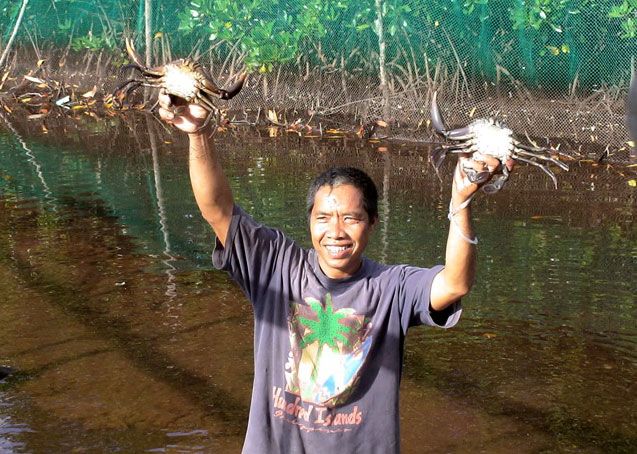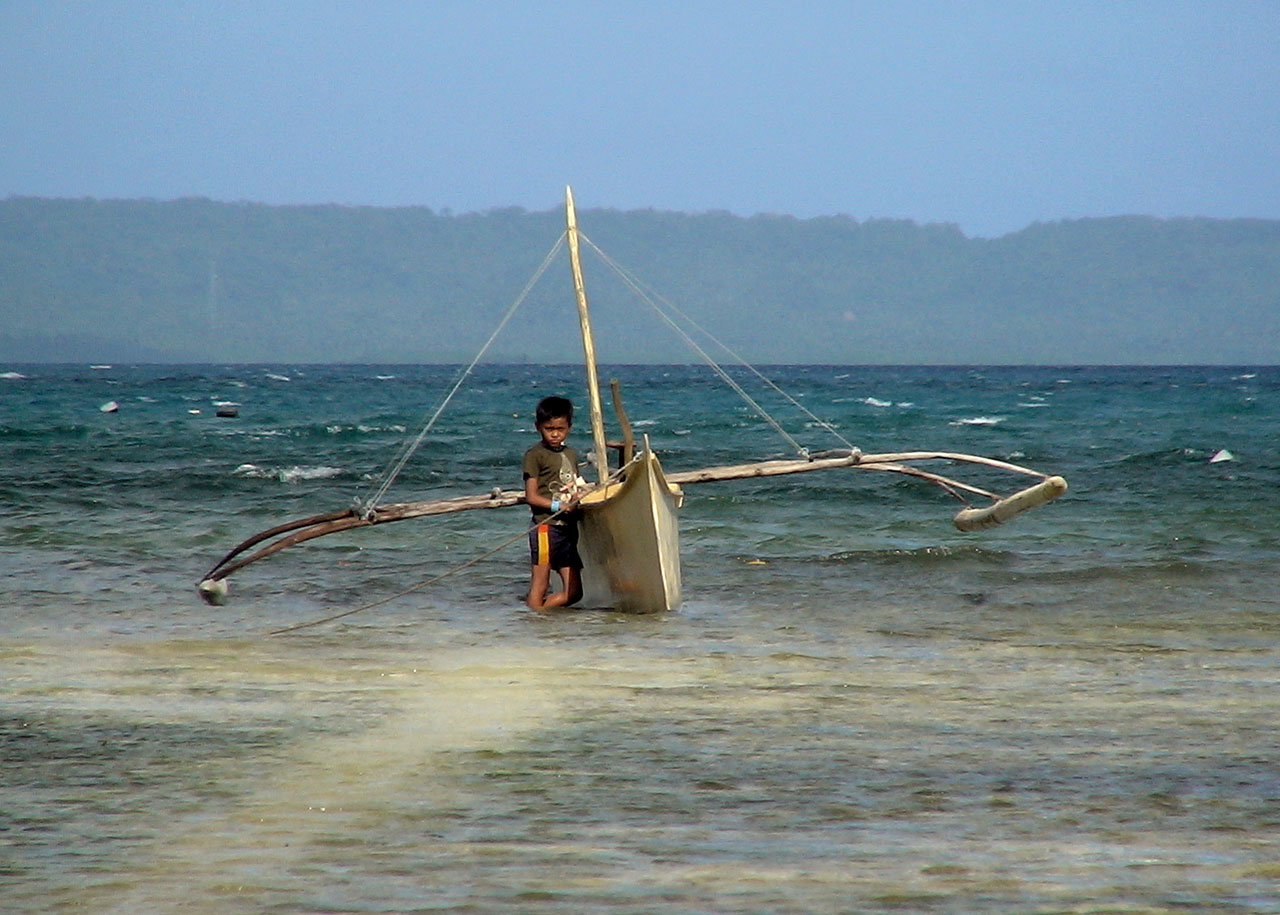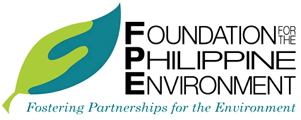Impact Stories
Images of Transformation: Community-based Coastal Resource Management in Guiuan
Posted on March 3, 2014|
Project Title: Guiuan Marine Development and Management Program
Year: 1992-1999
Grant Type: Responsive
Site: Guiuan and Salcedo, Eastern Samar
Proponent: Guiuan Development Foundation, Inc. (GDFI)
|

The usual mud crabs harvested from the mud crab ranch in Maliwaliw, a small island in Guiuan, weigh around one-half to one kilogram each. Community-based coastal resource management (CBCRM) is integral in sustaining this livelihood source for the Guiuan fisherfolk. (FPE/Claud Binondo)
Community Organizing and Institution-Building
THe FPE-GDFI project activated and consolidated the six POs in Guiuan and Salcedo as solid, durable partners and core constituencies at the grassroots level. The POs are Sulangan Multi-Purpose Association, Comverse Fisherfolk Association, Butig Multi-Purpose Association, Camanga Multi-Purpose Association, Maliwaliw Multi-Purpose Association, and Samahan ng Munting Mangangalaga ng Kalikasan sa Isla ng Sulu-an. The POs enjoyed various levels of accreditation by LGUs and the Department of Labor and Employment-Bureau of Rural Workers. They have been mobilized for various types of conservation strategies, livelihood and socio-economic activities, policy engagement and networking, and information and education campaign activities.
The POs also carried out organizational consolidation and capacity-building activities. They put organizational structures and systems in place and carried out some “house-cleaning and house-keeping” measures. Each PO defined its vision, mission, goals, and action plan. Each also developed its operational by-laws, created its governance and management structure, selected is officers and undertook regular meetings.
Some POs formulated resource management plans, particularly in areas where livelihood activities are being carried out (i.e., seaweed farming, abalone culture, mud crab and siganidculture, etc.).
The six POs have since federated themselves into the SEASPOC, which has been campaigning for a “unified fishery ordinance” that would approach CBCRM at an ecosystem and/or inter-municipality level. SEASPOC is an active partner in the multi-sectoral Alliance of Seven Municipalities for Integrated Coastal Zone Management (A7 or ICZM). This alliance has been leading the process of formulating a comprehensive development and management plan for the Northern Leyte Gulf that would harmonize local ordinances on fisheries.
The POs have formed and mobilized at least seven functional Environmental Protection Teams (EPTs) tasked with marine sanctuary monitoring (fish visual census and coral cover monitoring). They also formed and consolidated groups of community volunteer organizers and spearheaded the formation of inter-agency Coastal Zone Management Councils and Bantay-Dagat Task Forces at the municipal and MPA levels.
Environmental Governance and Resource Management
The marine protected areas, Bagonbanua Marine Sanctuary, Minonbonan Marine Reserve, and Puno Point Marine Sanctuary, were sustained and further strengthened. The establishment of marine reserves is supported by local or municipal ordinances. The rehabilitation of the degraded marine ecosystems yielded growth and regeneration of marine life. Regular patrolling of MPAs and apprehensions of violators of coastal marine and fisheries policies were carried out as local LGUs started to earmark support for the CBCRM efforts of GDFI and SEASPOC partners.
The marine sanctuaries and reserves are regularly monitored by locals trained in coral reef assessment, fish visual census, fish catch monitoring, and resource inventory. Margarita De la Cruz, GDFI’s Executive Director, takes pride in their steady headway in marine conservation. “With (marine) conservation, the results are seen not only in MPA sites, but also in the adjoining areas that show spill-over effects. In Maliwaliw, fisherfolk are able to fish within their communities, when in the past the meager catch forced them to venture further out into the sea… What used to be severely degraded coral reefs in Bagonbanua and Binabasalan are now dive sites. The mangroves are spreading and the branching corals are growing.”
GDFI manages 16 marine sanctuaries in seven municipalities and six of these – namelyBagonbanua and Puno Point sanctuaries in Guiuan; Minonbonan, Binabasalan, and Baol in Salcedo; and one in Suluan – arein SEASPOC areas, managed and safeguarded by SEASPOC partners.
SEASPOC members also carried out regular dialogues with LGUs on specific CBCRM issues and concerns, including availing of and accessing support for their coastal management initiatives (i.e. funds from LGUs for sanctuary management; food for work for mangrove and seaweed planting, income generated through fines and user fees from law enforcement used to support activities related to CBCRM). As a result, the six POs enjoyed levels of accreditation by their respective LGUs (i.e.Maliwaliw, Camanga, Suluan, Comverse, and Sulangan). They also sustained their linkages and engagement with provincial line agencies, as well as the LGUs, thus enabling the POs and the project partners to continuously access resources and equipment for their CBCRM (i.e. funding for seaweed farming, one unit patrol boat, three paddle boats, etc.).
SEASPOC and GDFI gradually established themselves as key players, representing the fisherfolk’s voice and their support on groups on CBCRM matters at the municipal, as well as provincial levels.
Livelihood Support
Over the years, the GDFI-SEASPOC partnership developed and implemented various livelihood and community-based socio-economic projects that are marine based and closely linked to resource rehabilitation and conservation strategies. These projects included seaweed culture, giant clams and abalone breeding, siganidculture and mud crab ranching. They resulted in varying levels of success and generated immense lessons for similar initiatives.

Years of CBRM program in Guiuan and Salcedo have not only improved the state of the area’s marine environment but also deepened the commitment of the community members on marine conservation for the benefit of the next generations. (FPE/Claud Binondo)
SEASPOC members also established some service-oriented, yet income-generating projects that are designed to meet the community’s basic needs, such as consumer stores, rice trading, sale of fishing supplies and portable water. These were capitalized through savings and income generated by marine-based community and livelihood and socio-economic projects. A certain percentage from the livelihood income is saved for organizational needs of the POs and for implementing conservation activities, such as MPA monitoring and patrolling.
Among the milestones is the success of the Comverse Fisherfolk Association (CFA) in its seaweed farming project. CFA had developed seven hectares of seaweed farm and sold Eucheumaseedstocks. They reportedly sold 150 tons of dried seaweeds from 1995 to 2006. Another promising community livelihood project is the Mud Crab Ranching Project in Maliwaliw, Salcedo.
Advocacy
The POs, individually or through their federation, SEASPOC, gained confidence and increased their capacity to lobby and successfully push for their policy agenda concerning CBCRM, engaging LGUs, concerned agencies and policy-makers at the local, municipal and provincial levels. SEASPOC initiated the campaign for a “unified ordinance” for coastal law enforcement and management in seven municipalities. They also pushed for amendments of local fishery ordinances.
SEASPOC members successfully undertook various information campaign activities that drew broad support and participation from other stakeholders such as the youth sector, barangay officials, church groups, etc. Teaching modules about CBCRM and the environment were developed and tested for elementary and high schools. The CBCRM project also facilitated the establishment of an organized youth group, the Young Environmentalists of Guiuan, which has been at the forefront of environmental awareness campaigns in the locality.
Education and training modules were developed to equip the POs with technical knowledge and skills related to marine conservation: Marine Protected Area (MPA) Monitoring for Communities; module on Giant Clam Hatchery and Ocean Nursery Management.
(Contributed by Samuel Gamboa)
* * * * *
Adapted from “Accompanying Fisherfolk in Their Journey Towards a Sustainable Future”in Manipon AJN and Mesina SR. 2009.“Communities, Conservation, and the Filipino Environmentalist.” Quezon City, Philippines: Foundation for the Philippine Environment.

 DISPLAY CALENDAR
DISPLAY CALENDAR
 Read Policy Briefs
Read Policy Briefs
 View Our Partners
View Our Partners
 Access Grants MIS
Access Grants MIS
 Login to Webmail
Login to Webmail